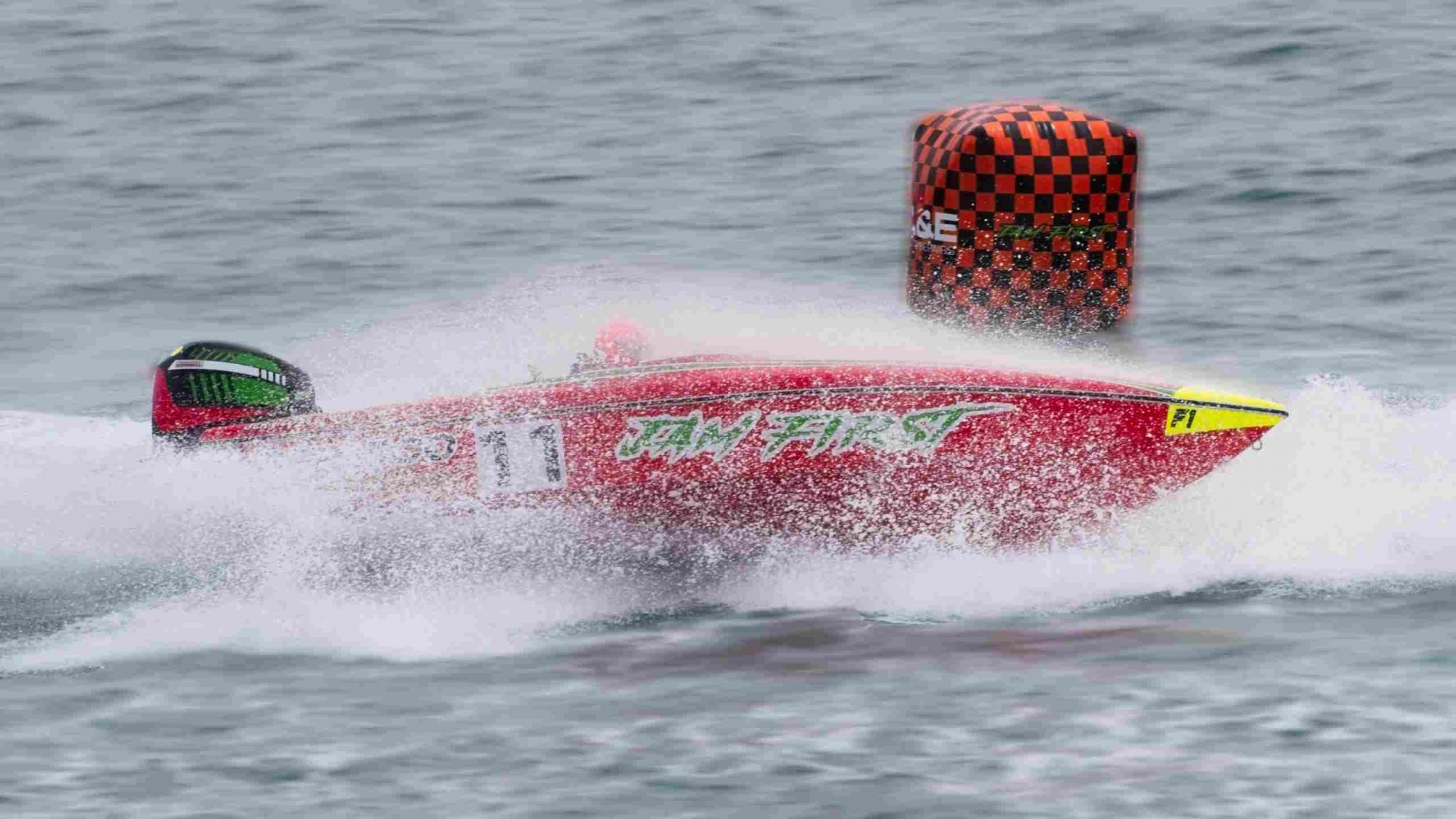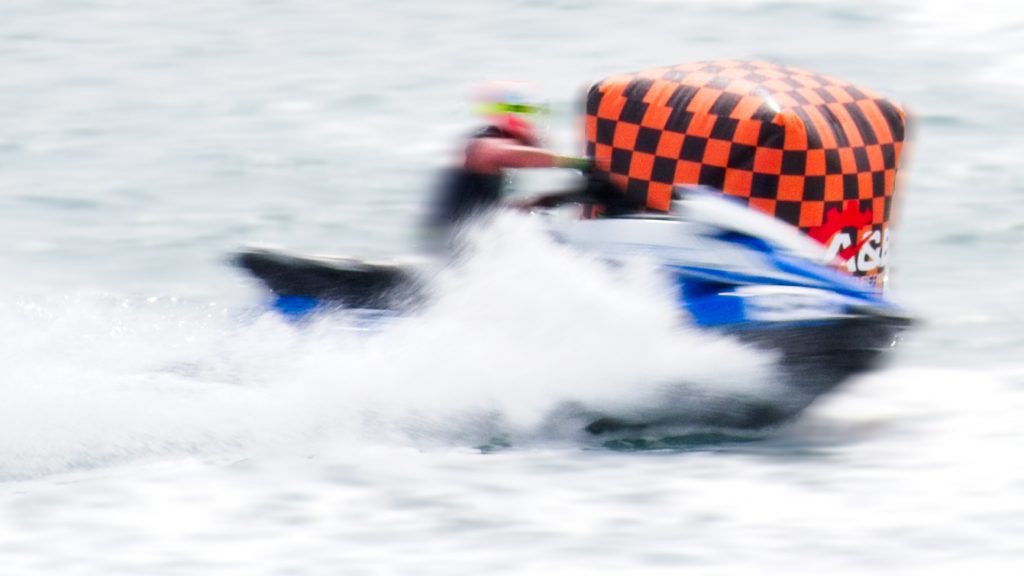This weekend was a veritable smorgasbord of delights as the much anticipated and delayed Pirates Festival and the OCRDA 2022 Aqua Adrenaline tour visited Torbay. In this article I am going to be talking a little about my two visits to the OCRDA event while in another article for Paignton Photographic Club I will talk about both events plus show images of the two from PPC members so why not visit http://www.ppcphotography.org.uk to take a look.
The OCRDA, which stands for The Offshore Circuit Racing Drivers Association is run by a professional and highly experienced team of dedicated individuals. Chairman Bob McCarthy has been at the helm for many years with recent years having seen the sport grow massively in popularity with over 31 teams competing in the 2017 season. Joining up with Jetski Racing, Water Ski Racing, Zapcat Racing, Jet Ski Stunt displays, and stunning Flyboarding displays, the series has toured since 2014 as Aqua Adrenaline – combining a number of aspects to provide fantastic on water entertainment for spectators. As the sport has flourished, OCRDA have been welcoming more teams and more companies in terms of sponsorship for what promises to be another fantastic season in 2022.
The OCRDA 2022 event comes to Torbay as the first of eight heats in this seasons race calander. As always it is a hugely anticipated event both for the exciting racing it brings as well as the event in general. There’s always something interesting to see, for example Ducati were on hand to show off some of their bikes. This year, the first season after lockdown, the event was overshadowed by dull weather across the two days although Saturday did provide a little sunshine to warm the competitors and the crowd. Having been to a number of these events now over the years I have lived here in Torquay, visitor numbers were definately on the lower than average side but since the event coincided with the Brixham Pirate Festival perhaps that’s to be expected. Even so, it’s well worth planning your stay in Torquay to coincide with the event.
The racing normally starts at around 13:00 each day as there’s a lot of preparation and safety work to get through and this generally takes up the morning. Over a couple of hours in the afternoon, there are generally four races, two of which are jet-skiers and two are for the powerboats. Both offer exhilarating spectacles as the various contestants via for prime position during the race. The course itself is probably a good couple of miles from start to finish so the boats and jet skiers tend to get strung out over the 20 minutes or so of the race but if you are lucky, you often get some great shots as the head towards the bouy closest to the sea wall on Beacon Quay en masse. This is a tight LH turn as the boats race in towards the quay and often you will get three or four boats jockying for position as they hit (metaphorically speaking) the bouy for this turn. Given that the spectators are just 75 metres or so from this bouy as you can imagine, it can be quite a spectacle.
Let’s Talk About Gear
For this shoot I chose to use my Panasonic Lumix GX-80 with, for the most part, a Lumix 45-200mm f3.5 – f5.6 lens. Since the Lumix GX-80 is a Micro Four Thirds format (MFT) this gives me a 400mm reach in an extremely compact package. Although I will never be able to shoot top quality at this focal length, my focus (excuse the pun) is on creating shots with energy and movement rather than pin-point precision. Littered around the harbour wall I could see photographers with Canon and Sony FF cameras with lenses upwards of 600mm. Competing with these guys is simply not a strategy I want to adopt. The other thing about carrying around such a compact camera & lens combo is that you never get tired unlike my friends sporting heavy gear. I could have shot all day if need be. All this being said, is my Lumix gear up to the challange? Well, that depends very much on your perspective and what you want to get from this event. My images deliver movement and energy in bucket loads but I did make mistakes with my speed settings, particulalry on the 2nd day. On the Saturday I purposely chose really slow speeds, south of 1/100s and typically as low as 1/60s. That choice delivered a lot of the shots shown below. When I wanted to capture pin-point precision I shot at much higher speeds, typically around 1/1000s and again, this worked really well. However, on the second day I shot at 1/100s or 1/125s for much of the time and this middling speed setting didn’t work at all. In fact a lot of the 2nd days shots were binned when I later looked at the results. There are always a few that slip into the OK section but in truth, hardly any were good enough for what I was looking to achieve.
here is a list of the gear I used and my best settings for the day.
- Lumix GX-80 body (MFT sensor with a 2x crop factor)
- Lumix 12-60mm (for candid shots of the spectators etc)
- Lumix 45-200mm (for the action)
- ISO typically 200 across both days
- Speed 1/1000s for shots where I wanted to freeze the action
- Speed 1/60s where I wanted movement and energy
- Focal length varied between f5.6 – f16 depending on speed settings and light available
- Conditions were variable with decent light for the most part
Let’s Talk About Post-Processing
All of the editing done here was with On1 PhotoRAW 2022. With regards what I did, well, the majority of images here were given the same approach. This was basically to:
- Apply a Gussian blur to the water (I chose the Motion option as it works better for water). This requires some masking to certain parts of the image as, for example, I don’t want to further blur any movement of the riders or boats
- With images that are low contrast – as here because of the so-so weather conditions, I tend to add exposure and contrast or at least push the blacks and whites to their limits on the histogram. This tends to wash out the packground leaving the subject to pop from the image. Personally I think that this works well for slow motion images as here. When doing this I keep an eye on the over/under exposure indicators so as not to blow out the images. This is important where there’s a lot of white.
- Because I like filmic effects I quite often push the colours a little using a preset. Here have applied a couple of presets provided by On1, these being Kodachrome 64 and Velvia 50. You don’t have to do this of course, you can just add a little saturation but by using a filmic preset you do get closer to film which is something I personally enjoy.
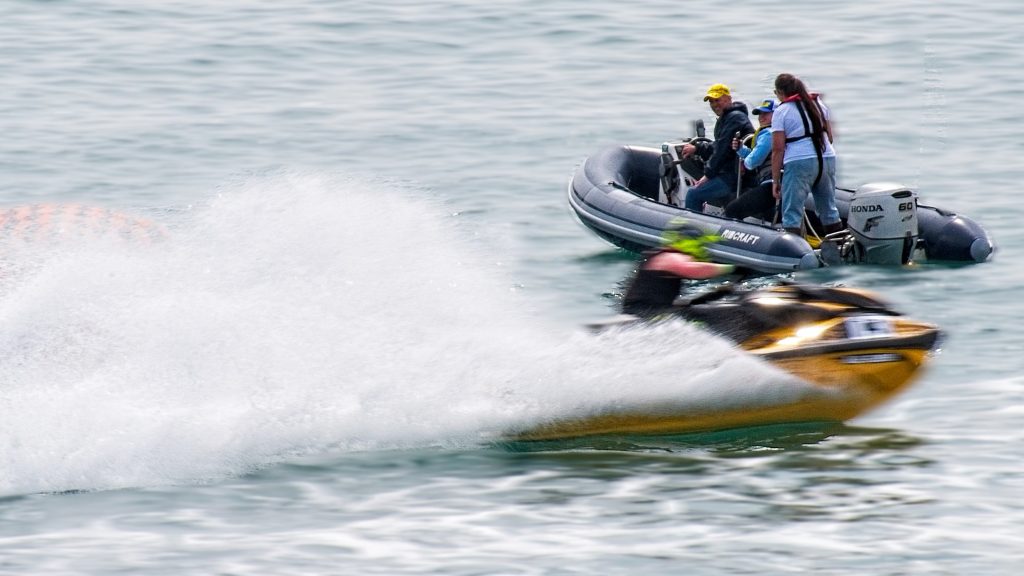
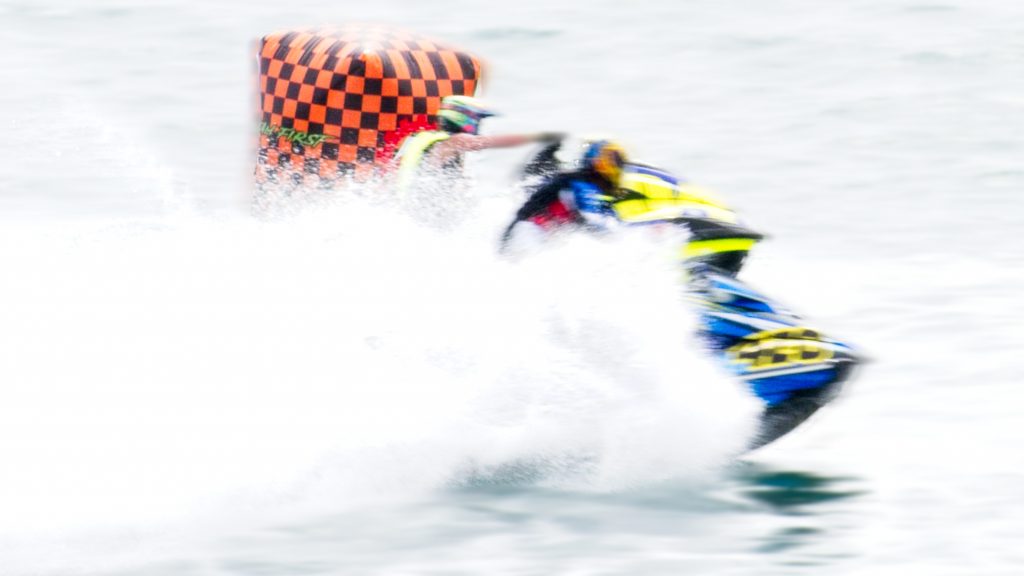
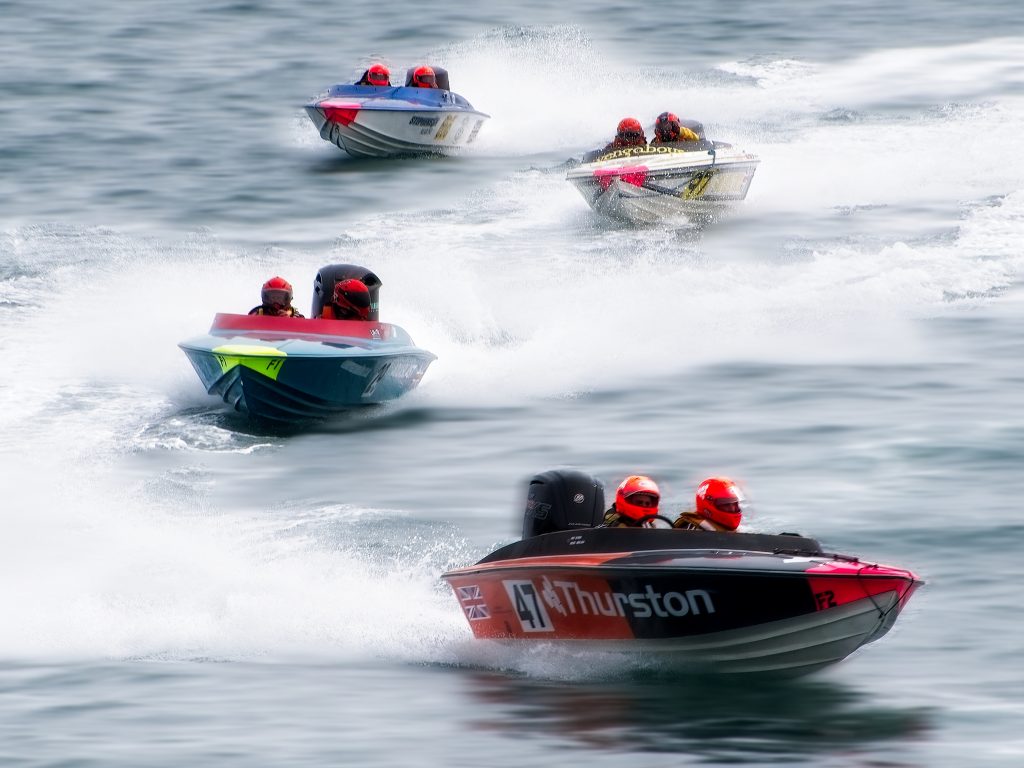
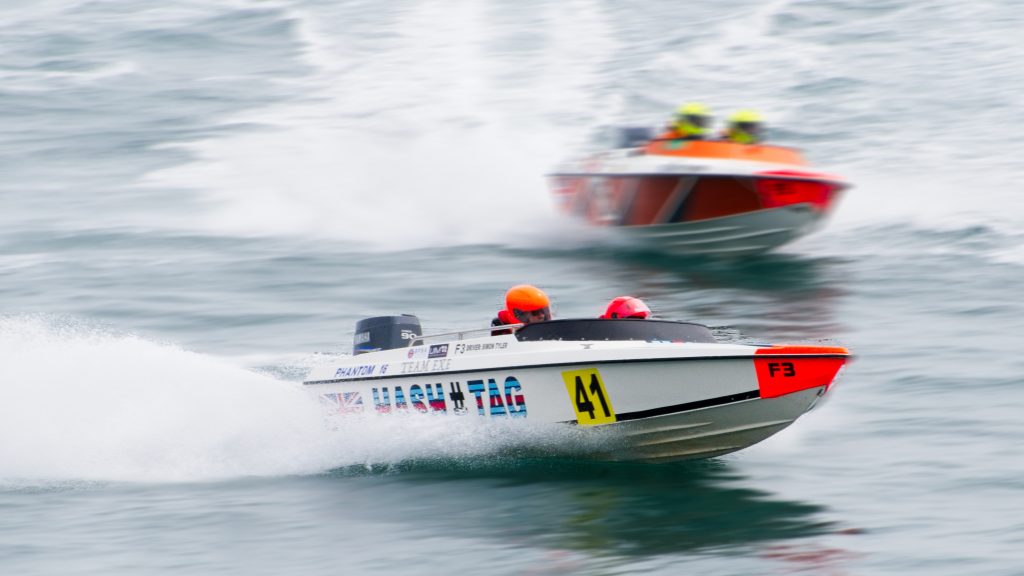
If you are interested in upcoming events, or you would like to know the results associated with this event then please visit the OCDRA website at https://www.ocrda.com/ for more information and tour dates.
